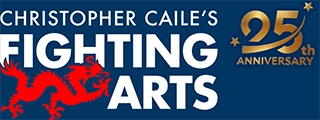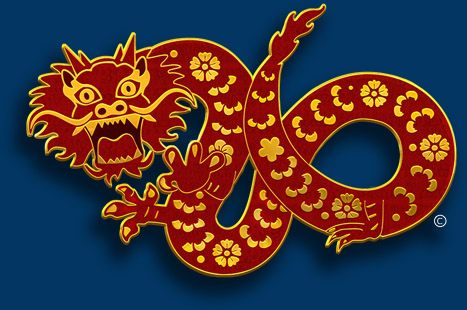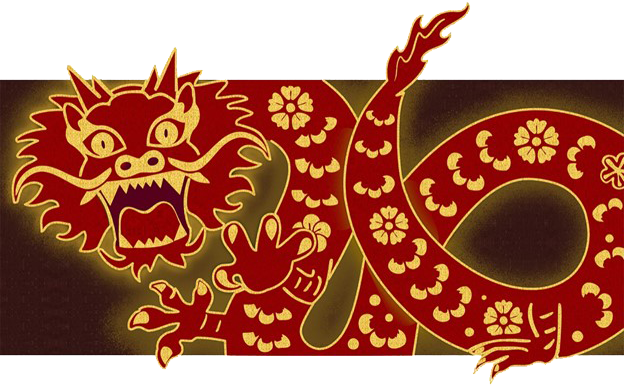Qi gong: An Introduction
by Christopher Caile
Qi gong is also known as Chi Kung, or Kiko in Japanese. Qi gong is the ancient Chinese art of energy training or practice. "Qi" (Chi) means energy and "gong" (Kung) means work or practice. In China it is used in traditional hospitals and clinics to treat a wide range of conditions from arthritis to cancer. Millions also do qi gong exercises to boost vitality, to insure against disease or to fight chronic conditions. Its energy methods are also an integral part of Tai Chi, many martial disciplines, as well as Taoist and Buddhist practices. In the West qi gong has only recently become known (over the last 20 years), but it may be the oldest of all the Chinese healing arts with roots tracing back over thousands of years. Other Traditional Chinese Medicine (TCM) members include acupuncture, T'un-na (a predecessor to Japanese Shiatsu) and herbal medicine.
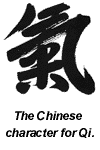
Thus when Western medicine sees a problem, like a stomach condition, the diagnoses ties it (deductively) to a cause. Thus, an anti-acid might be used for all those who suffer in common from indigestion. Qi gong, as well as TCM, might treat each patient differently, in each case the treatment tied to restoring important underlying conditions, balances and levels of energy that constitute health and vitality. Once these are in place the body restores its own health. This is an important consideration. Health is not seen just as an absence of symptoms, disease or in terms of a healthy outward appearance. It's what's happening inside (energy vitality and balance) that is critical, especially as age takes its toll on our immune system and body functions (immune strength typically falling be a much as 70% by the time most people reach 70).
Qi gong is similar to Therapeutic Touch, Reiki, Healing Touch and other energy medicines in that they all are able to affect individuals with their own energy or energies directed through them. Qi gong (and TCM), however, is different in that it has its own distinct model of the body in terms of energies and their relationships. A qi gong practitioner might just transmit a general healing or balancing energy to others. More experienced practitioners, however, might use pure yin or yang energy, or use energies at various frequencies mixed with various intents (specific intentions mixed with emotional content) that can have different effects. For example, a person whose skin is raw from radiation treatment, sunburn or a burn can be soothed (will experience a cooling effect) by sending cool yin energy to the affected area. Other energies, often experienced as warming, can greatly affect the speed of healing within the body from injury or operation. A bruise on the hand, foot, or face (a hard area) can often even be countered, the swelling and blood accumulation re-absorbed by the body, if treated quickly as the condition is developing. Some qi gong traditions utilize the practitioner's own body energy (often drawn from different body centers of energy) for these purposes, but many more only use their own energy to help to jump start, and/or channel other energies through themselves to others, intent (specific intentions mixed with emotional content) used by some to provide a specific mental color or charge to the channeled energy. Qi gong also differs from these other systems in that it includes a wealth of self-practice techniques and methods.

In addition to a different energy model, qi gong is also different from many other energy systems in that it includes self-practice. Qi gong can be done alone, at any time, standing, sitting or even when confined to bed. Exercises can be stationary, moving or both. They use breathing techniques, meditations, visualizations, sounds, vibrations, pressure point manipulations and movement mixed with intention as well as sensory awareness to lead, direct, balance or strengthen energy flow.
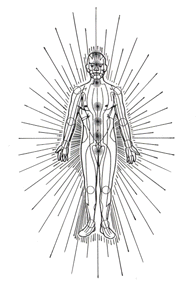
Qi gong practice includes sets of movements, as well as fixed postures and meditations. Some practices are aimed at overall strengthening and regulation of energy, while others are more specific and targeted – used to stimulate and regulate energy flow, oxygen intake and blood flow as well as to massage organs, stimulate glands, promote lymphatic flow and stimulate the parasympathetic branch of the Central Nervous System. Some say qi gong resembles a mix of moving yoga and self-chiropractic. Others say it looks like tai chi without steps or it is zen with intention. Qi gong is also often combined with acupuncture, herbal medicine and T'un-na.
At a minimum qi gong practice is deeply relaxing and stimulates brain alpha or beta wave function. Practice also make people feel more vitalized and immune function can be increased. Chronic conditions often improve. Many are able to combat simple medical problems from tooth aches to minor infections. Injuries, cuts and bruises heal faster. Serious practitioners often evidence changes in skin (rebuilding connective tissue). For disease prevention, treatment of chronic conditions, healing, maintaining vitality and extension of life, the system is without parallel. This is not to say that Western medicine is not effective. It is certainly superior for emergency medicine, sophisticated diagnostics and treatment of viral infection. But it also has limitations. Western medicine has less than a sterling record with many chronic conditions, or conditions related to stress. A lot also has to be learned about healing and bolstering immune capability.
Energy practices in the martial disciplines often differ from those in the healing arts and can use different energy as well, including yang/jing energy combined with intent and projections of attitudes, mental states or emotions (to mentally unbalance or even move an opponent). Certain practices are also used to protect the body from injury and to increase strength. Some exercises bolster the body's ability to absorb blows to virtually any area except the eyes. This is often call Iron Shirt or Iron Bell training in the Chinese arts and body conditioning in the Okinawan and Japanese arts. Some systems employ striking, gripping or pressure techniques to affect acupuncture points (often co-located with neurological points) in combinations that have an effect not understood in Western science. Energy flow is disrupted, enhanced or interrupted in such a way as to affect (1) muscular function and strength, (2) blood flow and pressure, (3) structure (bone and ligament), (4) organ function, such as the ability to breath and heart function, (4) internal orientation, as in balance and mental stability, or the brain's ability to process incoming stimuli. In some martial systems internal energy is also combined with relaxed, quick, or whip like actions to enhance strength and/or the affect of striking energy to penetrate an opponent's body. Energy can also be projected to affect the opponent's energy, balance, or muscle ability.
As part of Taoism, qi gong energy practices are also used as a vehicle to achieve immortality. Some Buddhist traditions also have qi gong roots. In these disciplines careful guidance of a trained teacher is essential.
About the Author Christopher Caile
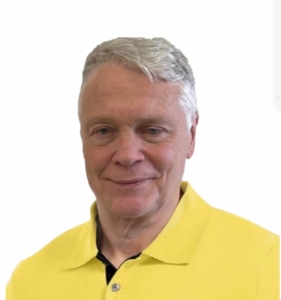
Screenshot
Christopher Caile is the Founder and Editor-In-Chief of FightingArts.com. He has been a student of the martial arts for over 65 years.
He first started in judo while in college. Then he added karate as a student of Phil Koeppel in 1959 studying Kempo and Wado-Ryu karate. He later added Shotokan Karate where he was promoted to brown belt and taught beginner classes. In 1960 while living in Finland, Caile introduced karate to that country and placed fourth in that nation's first national judo tournament.
Wanting to further his karate studies, Caile then hitch hiked from Finland to Japan traveling through Scandinavia, Europe, North Africa, the Middle East and South and Southeast Asia — living on 25 cents a day and often sleeping outside.
Arriving in Japan (1962), Caile was introduced to Mas Oyama and his fledgling full contact Kyokushinkai Karate by Donn Draeger, the famous martial artist and historian. Donn also housed him with several other senior international judo practitioners. Donn became Caile's martial arts mentor, coaching him in judo and introducing him to Shinto Muso-ryu under Takaji Shimizu.
Caile studied at Oyama's honbu dojo and also at Kenji Kurosaki's second Tokyo Kyokushinkai dojo. In his first day in class Oyama asked Caile to teach English to his chief instructor, Tadashi Nakamura. They have been friends ever since. Caile also participated in Oyama's masterwork book, "This Is Karate."
Caile left Japan with his black belt and designation as Branch Chief, the first in the US to have had extensive training in Japan directly under Oyama Sensei. As such, Oyama Sensei asked him to be his representative on visits to his US dojos to report on their status.
A little over a year later, Nakamura, Kusosaki and Akio Fujihira won an epic David vs. Goliath challenge match against Thailand's professional Muay Thai Boxers in Bangkok, Thailand, thrusting Kyolushinkai and Nakamura into national prominence.
Back in the US Caile taught Kyokushinkai karate in Peoria, Il while in college and later in Washington, DC. while in graduate school. Durimg this time Shihan Nakamura had moved to New York City to head Kyokushinkai's North American Operation.
In 1976 when Kaicho Tadashi Nakamura formed the World Seido Karate organization, Caile followed. Living then in Buffalo, NY, Caile taught Seido karate and self-defense at the State University of New York at Buffalo (SUNY Buffalo) for over 15 years where he also frequently lectured on martial arts and Zen in courses on Japanese culture.
Caile moved to New York City in 1999 to marry Jackie Veit. He is now an 8th degree black belt, Hanshi, training in Seido Karate's Westchester, NY Johshin Honzan (Spiritual Center) dojo. In Seido Caile is known for his teaching of and seminars on kata applications. He also produced a 14 segment video series on Pinan kata Bunkai currently available to Seido members.
Caile is also a long-time student and Shihan in Aikido. He studied in Buffalo, under Mike Hawley Shihan, and then under Wadokai Aikido's founder, the late Roy Suenaka (uchi deshi under Morihei Ueshiba, founder of Aikido and was Shihan under Tohei Sensei). In karate, Suenaka (8thdan) was also an in-house student of the Okinawan karate master Hohan Soken.
Having moved to New York City, Caile in 2000 founded this martial arts educational website, FightingArts.com. Twenty-five years later, in 2025, it underwent a major update and revision.
For FightingArts.com and other publications Caile wrote hundreds of articles on karate, martial arts, Japanese art, Chinese Medicine and edited a book on Zen. He also developed relationships with a cross section of leading martial arts teachers. Over the last four decades he has conducted extensive private research into karate and martial arts including private translations of the once secret Okinawan hand copied and passed on Kung Fu book, the Bubishi, as well as an early karate book by the karate master Kenwa Mabuni. He periodically returns to Japan and Okinawa to continue his studies and participate Seido karate events. In Tokyo he practiced (with Roy Suenaka Sensei) in a variety of aikido organizations with their founders – including private interviews and practices at the Aiki-kai Aikido Honbu dojo with the son and grandson of aikido's founder, Doshu (headmaster) Kisshomaru (an old uchi-deshi friend) and his son, Moriteru Ueshiba and in Iwama with Morihiro Saito. On Okinawa he studied Goju Ryu karate under Eiichi Miyazato, 10th dan founder of Naha's Jundokan, and also with Yoshitaka Taira (who later formed his own organization, who specialized in kata Bunkai. While there Caile also trained with Hohan Soken's senior student, Master Fusei Kise, 10 dan as well as with the grandson of the legendary karate master Anko Itosu.
Caile's other martial arts experience includes: Diato-ryu Aikijujitsu and Kenjitsu, kobudo, boxing, Muay Thai, MMA, Kali (empty hand, knife and bolo), study of old Okinawan Shoran-ryu & Tomari body mechanics, study of old Okinawan kata under Richard Kim, study of close quarter defense and combat, including knife and gun defenses, Kyusho Jitsu and several Chinese fighting arts including 8 Star Praying Mantis, Pak Mei (White Eyebrow), and a private family system of Kung Fu.
Caile is also a student of Zen as well as a long-term student of one branch of Traditional Chinese Medicine, Chi Kung (Qigong). As one of two senior disciples of Chi Kung master Dr. Shen (M.D., Ph.D.) Caile was certified to teach and practice. This led to Caile's founding of the The Chi Kung Healing Institute on Grand Island, NY. In Western NY, he also frequently held Chi Kung seminars, including at SUNY Buffalo and at the famous Chautauqua Institution in Chautauqua, NY. His articles on Chi Kung also appeared in the Holistic Health Journal and in several books on alternative medicine.
Caile holds a BA in International Studies from Bradley University and MA in International Relations with a specialty in South and Southeast Asia from American University in Washington, D.C. While in Buffalo, NY he also studied digital and analog electronics.
In his professional life Caile also worked in public relations and as a newspaper reporter and photographer. Earlier he worked in the field of telecommunications including Managing a Buffalo, NY sales and service branch for ITT. He then founded his own private telephone company. This was followed by creation of an electrical engineering company that designed and patented his concept for a new type of low-cost small business telephone system (which was eventually sold to Bell South). The company also did contract work for Kodak and the US space program. Simultaneously Caile designed and manufactured a unique break-apart portable pontoon boat.
Most recently Caile co-founded an internet software company. Its products include software suites with AI capability for control and management of streaming media, such as video and music, an all-in-one book publishing software product for hardcover, eBook and audio book creation and security software for buildings and government use.
For more details about Christopher Caile's martial arts, work experience and life profile, see the About section in the footer of this site.
Search for more articles by this author:
